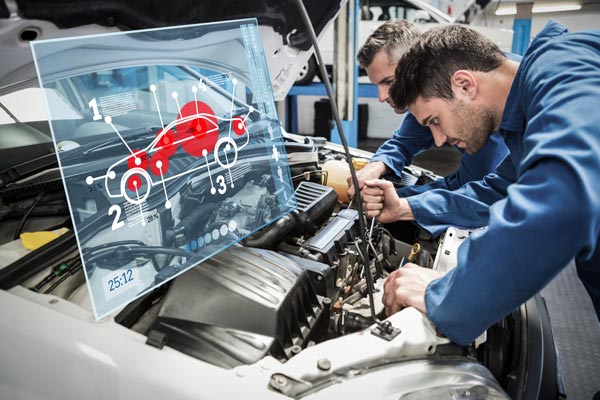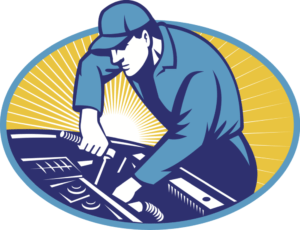
07 Aug Reconditioning; Your last opportunity to make profits
[vc_row css_animation=”” row_type=”row” use_row_as_full_screen_section=”no” type=”full_width” angled_section=”no” text_align=”left” background_image_as_pattern=”without_pattern”][vc_column][vc_row_inner row_type=”row” type=”full_width” text_align=”left” css_animation=””][vc_column_inner][vc_column_text] Reconditioning is one of the last opportunities in the modern dealership to make money. Unfortunately, most general managers don’t appreciate this function’s role in a well-run used car operation.
As we move into a market identified by slowing new car sales and used car departments awash with off-lease vehicles, reconditioning will play an increasingly important role in your dealership’s sustainability. When good times return, a highly tuned recon operation run by the numbers will:
- Ensure stable used vehicle margins
- Reduce holding cost; get vehicles front line ready for less cost
- Increase inventory turn
[/vc_column_text][vc_empty_space height=”25px”][/vc_column_inner][/vc_row_inner][vc_row_inner row_type=”row” type=”full_width” text_align=”left” css_animation=””][vc_column_inner width=”1/2″][vc_column_text]Getting a dealership to this level of reconditioning efficiency and profitability is a GM-level responsibility. General managers who understand how to move this important function into 2017 will get rid of ineffective whiteboards and spreadsheets. No reconditioning manager I’ve talked to believes these tools do a good job in tracking recon processes and holding the crew responsible for getting all the details done on time.[/vc_column_text]
[/vc_column_inner][vc_column_inner width=”1/2″][vc_single_image image=”293″ img_size=”full” qode_css_animation=””][/vc_column_inner][/vc_row_inner][vc_row_inner row_type=”row” type=”full_width” text_align=”left” css_animation=””][vc_column_inner][vc_column_text]When asked about their recon cycle times, most recondition or service managers will say they’re at about five days. NADA says the goal is three. In reality, when we apply Time-to- Market (TTM) work flow software science to these dealers’ reconditioning, they learn their cycle is not three days but more like seven to 12 days.The GM also has overall authority for the departments connected to the reconditioning process — trades, auctions, service, parts, sublets and used car sales.
So the GM has another responsibility: deciding to drive down the dealership’s recon cycle to a more pro table, and very attainable, five days or less. This can be a high mountain to climb, however, without best-in-class processes in place to automate, monitor and improve work flow through recon to retail.
By not knowing for certain what your true reconditioning cycle time is, your “recon plan” leaks time and money. That leakage is wrecking your retail gross and inventory turn.
By definition, TTM is the time between the dealership’s purchase of a vehicle and the time when it is reconditioned and available for customer viewing. A Time-to-Market culture will:
- Drive down recon costs
- Get vehicles front line ready in four to five days – not 10 to 12

GMs who take charge, manage by the numbers and hold individuals responsible for creating them.
A TTM culture — driven by committed leaders such as visionary GMs — earns respect and attracts highly productive and loyal teams. A TTM culture won’t stick where a GM delegates its adoption. The GM must present the strategy so service and used car sales can execute it. After working with hundreds of dealerships having processed more than a million vehicles through their reconditioning departments, I’ve seen that, in effective dealerships, the GMs have fostered a highly productive and measurable TTM culture.
Let’s be clear on the advantage.
According to our 20 Group clients, moderator experts and NCM Associates, daily holding cost for the average dealership is $36 per vehicle per day, based on the franchise and market area. Here’s the math: Shave six recon days off 100 units and the savings accrue to more than $19,000 a month or $230,400 a year. Is that worth getting excited about? Eliminate 2.5 days from your recon cycle and you gain one additional inventory turn.
Here’s what Time-to-Market does for you:
- It defines the work to be done to achieve a particular outcome — and who is to do what, when and how.
- It identifies key steps in a process and helps determine which, if any, can be eliminated to speed workflow without compromising quality.
- It assigns people having the right skill sets to specific tasks to ensure efficiency and quality.
- It creates a work flow, relieving managers from having to focus on tasks.
- It builds rhythm into work and creates crew confidence, so productivity increases.
If you see the value in improving your recon operation’s production, reducing its costs and getting inventory front line ready in three to five days, a Time-to-Market workflow strategy is right for you. Here’s how to get started:
- Pull your management team together to look at live systems using GoToMeeting or other conferencing software. Consider the system’s flexibility to work within your processes and make them better. To schedule your online demo go to http: https://www.rapidrecon.com
- Talk with dealers practicing TTM and, if it makes sense to do so, invest in a road trip to learn from others and see their processes live.
- Request a qualified process-performance technician to help you design a system that supports your TTM objectives.
- Assign ownership of every step of the recon processes within this new workflow.
- Provide mobile and desktop tools, notifications and reports that make these individuals 100 percent responsible and accountable for making sure that, at the end of every day, every car is the right step.
- Apply TTM best practices first to inspection, mechanical, parts, used car manager approval, detail and photos. Body shop, vendors and handling open safety recalls will all have a weighted impact and need to be considered.
- Best practices dictate that the combination of mechanical — including inspection and parts hold — and detail must be two days or less. The body shop will likely add another day to 35 percent of your cars, taking 4.5 days average.

A Time-to-Market culture measures every step, process and labor input to get vehicles front line ready in four to five days. Run by the numbers, your reconditioning department will be the profit driver you need it to be.[/vc_column_text][/vc_column_inner][/vc_row_inner][/vc_column][/vc_row]
Go to our website at https://www.rapidrecon.com for more information on creating a culture of TTM in your store.


Sorry, the comment form is closed at this time.